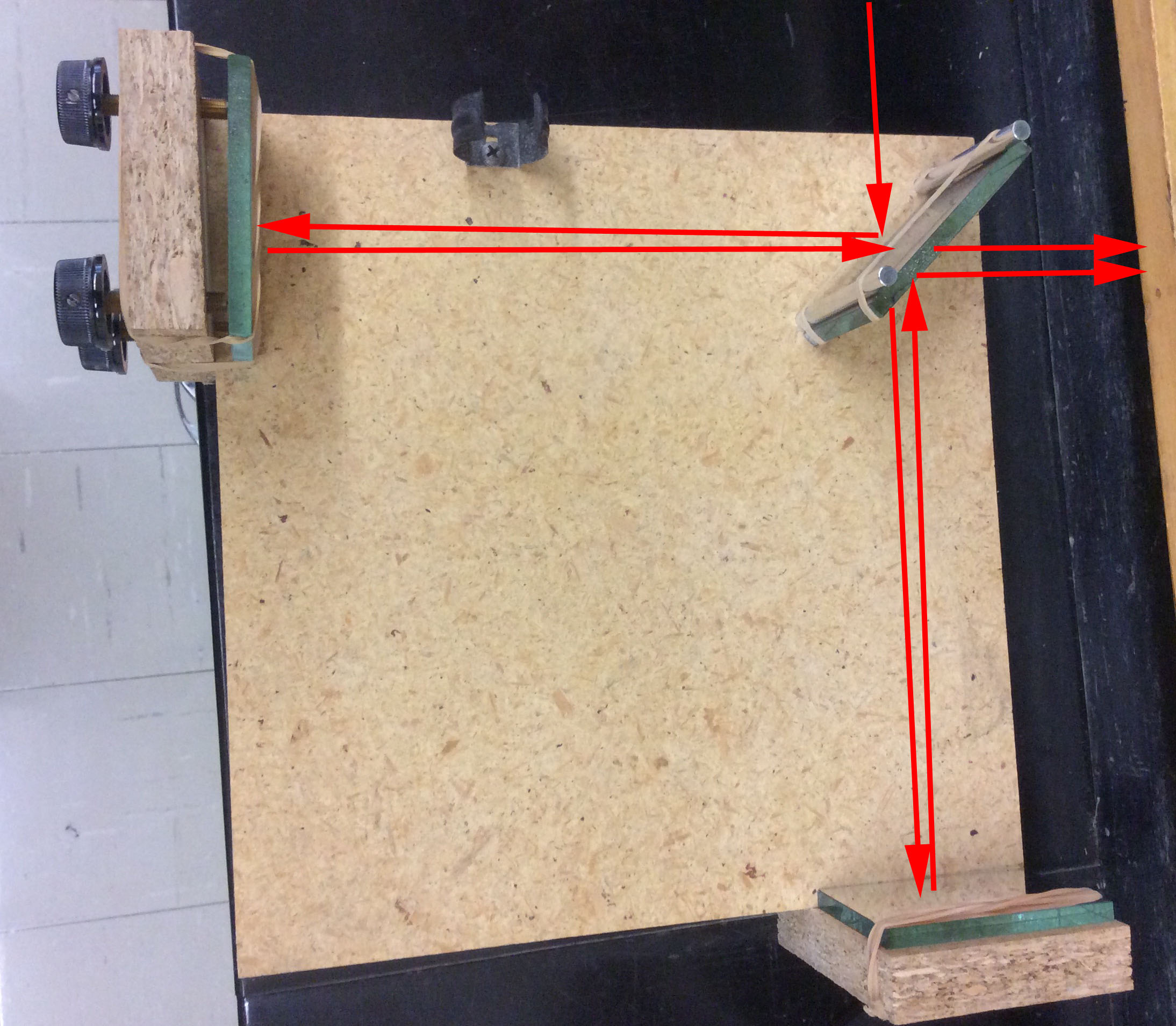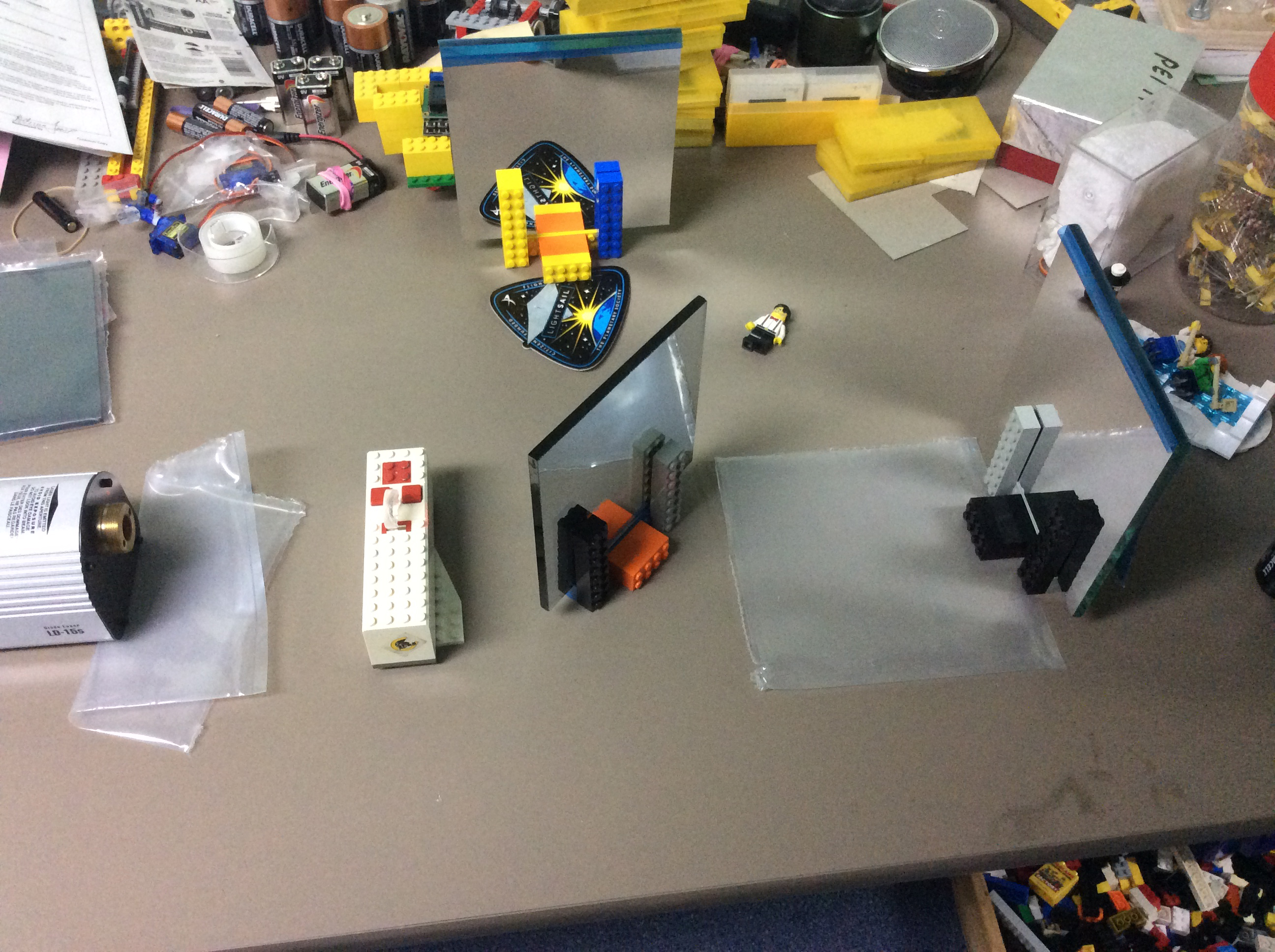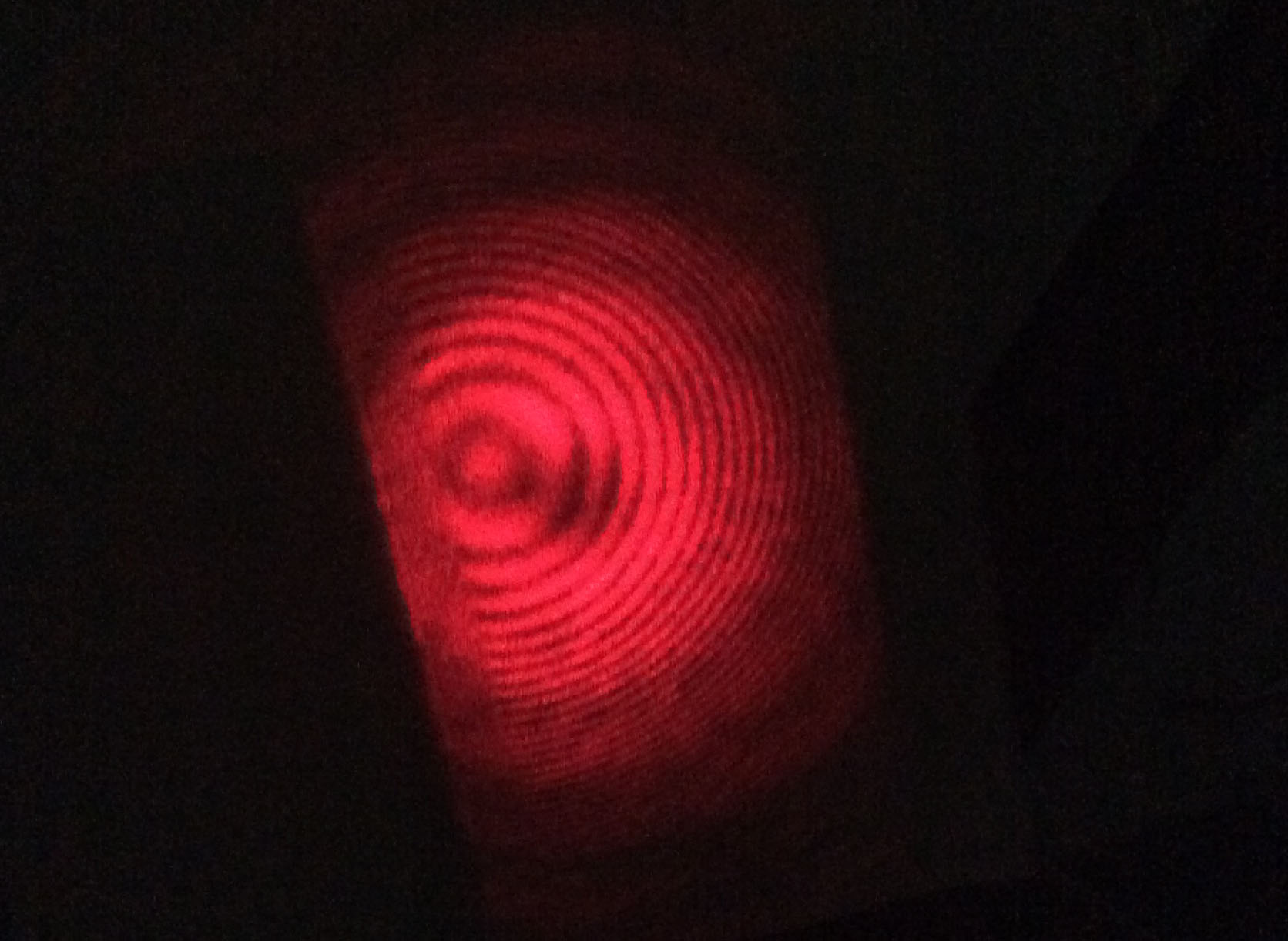Richard Taylor, Merivale High School, Ottawa
(see also mrtaylorspace.wordpress.com)
richard@teya.ca
My school has had a Michelson Interferometer for many years, and I always show it to my grade 12 students to help explain the Michelson-Morley experiment - the one that showed that the speed of light does not depend on the motion of the observer. I showed this interferometer to some other Physics teachers on the February 2016 PD day in Ottawa. They were very interested and wanted to show their students. So I thought I would find out if I could build a similar and very inexpensive interferometer.
This is what my school’s interferometer looks like:

It looks, and is, very simple: a half-silvered mirror at 45 degrees, and two other mirrors at 90 degrees relative to each other. I've drawn in the path of the laser beams: coming in from the top of the picture, it goes through the half-silvered mirror directly towards the mirror at the bottom of the picture and also reflects off the half-silvered mirror to go towards the mirror at the left. The two beams reflect from these mirrors and return to the half-silvered mirror where again, they go through and reflect so that both beams emerge on the right (as well as heading back towards the source laser.) This produces an interference pattern that is
very sensitive to small changes in the two paths.
This year, this type of device was used in another very interesting experiment: LIGO’s discovery of gravitational waves. (LIGO has an excellent web site:
www.ligo.caltech.edu) LIGO’s version of the interferometer is much bigger and much more sensitive, but it uses the same principle as this little one. Gravitational waves create very small changes to the two paths, which create very small, but measurable, changes in the interference patterns.
The main difficulties in building this device is that the two perpendicular mirrors must be good quality “first surface” mirrors, meaning that the light reflects off the shiny surface without going through the glass. You also need a beam splitter or half-silvered mirror. These are more commonly known as “two way mirrors”. That name turned out to be the key word in my search for inexpensive materials. There is a company called
Two Way Mirrors in Toledo, Ohio that specializes in producing these mirrors for security and privacy applications. As a sideline they also produce the first surface mirrors I needed. I ordered a set of mirrors (US$11.83) and they arrived within a couple of days — the shipping was more expensive (US$23.78) than the mirrors themselves.
My first idea was to make a simple setup (I generally use Lego) just to see if it would work. I wasn’t sure that the mirrors would be of high enough quality, or if I would be forced to buy much more expensive mirrors from a scientific supplier. I also wasn’t sure how solidly I would have to build the device and what would need to be fixed in place and what should be adjustable. Although I intend to use a cheap laser pointer, for testing purposes I borrowed a larger, plug-in laser from the school.

There was a
lot of trial-and-error involved. The Lego stands were not very easy to adjust for the angle of the mirrors (that’s why there are plastic bags under the front edge). The two-way mirror gave me a lot of concern. It split the beam, but not very equally. One beam was a lot brighter than the other, and because the light had to pass through the glass, there were extra reflections from the surface of the glass as well as from the shiny part. However after some very patient and careful adjustments, I did get the beams to line up properly, and then when I spread out the beams using a small lens (on that white rectangular box with the red buttons), I saw this:

Bull’s eye! Those bright and dark circles are the interference pattern! I could tell they were caused by the interference of the two beams because when I blocked one of the two beams, the pattern would disappear.
The occurrence of this pattern proves that the mirrors and laser will work to make my Michelson Interferometer. However, the difficulties in getting it to work show me that I need to build a much more stable structure, yet with ways of adjusting the mirrors that are more precise. Stay tuned — I’ll post more details as I continue to figure this out. I’m open to suggestions, comments and questions:
richard@teya.caTags: Light, Modern Physics, Nobel Prize




